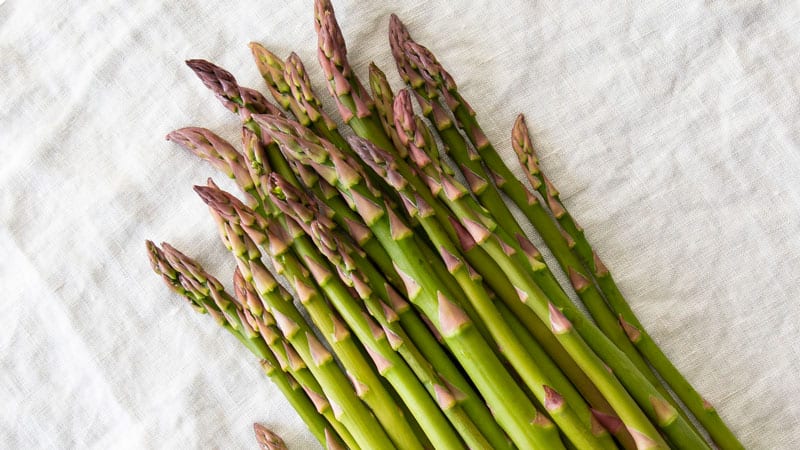Oh, Sweet Asparagus
This article was originally published in April 2017

We know spring really, truly has arrived when local stalks make their debut at PCC. Here’s the scoop on getting the most out of this seasonal superstar.
Selecting
Leaves
Look for firm, tightly closed tips. Leaves that have opened up or appear wilted are signs the asparagus is past its prime. The tips should be as pristine as possible.
Stalks
Asparagus stalks range in size from pencil-thin to fat and thick. The width of the stalk is not related to its age — in other words, thin asparagus does not eventually become thick asparagus. Rather, it depends on the variety and age of the base from which each spear sprouts.
Both sizes have their merits and perform better with certain cooking methods. Thin spears are more fibrous and therefore snappier. They’re great shaved raw into salads, blanched and served cold, steamed, or stir-fried. Fat spears tend to be more sweet and tender. Select them for higher-heat applications, such as grilling, roasting and pan-searing, which helps caramelize asparagus’ natural sugars. Aim for similar-sized stalks to ensure even cooking..
Prepping
Some people swear snapping off the woody ends is superior to using a knife, but precious asparagus can be lost with this method. Cutting above the white is just as effective and more precise.
1 pound = 12 to 20 spears (depending on size) = about 3 1/2 cups chopped
Storing
Asparagus should be used as soon as possible. If you need to store it, treat it like a bouquet of flowers for best results — trim the ends and place the bunch in a glass of water. Loosely cover the tips with a plastic bag and store in the fridge; this will help keep the stalks crisp. The asparagus will keep fresh for three to four days.
Start cooking
Try our recipes for Lemon Ricotta Pizza with Shaved Asparagus, Grilled Asparagus Gremolata, and Ginger Asparagus Shrimp. Get recipes »
